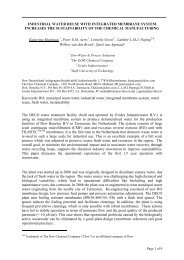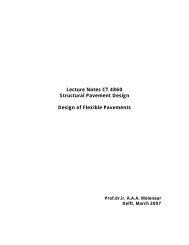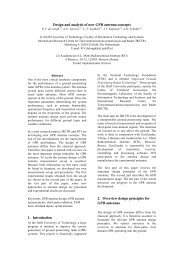CT4860 STRUCTURAL DESIGN OF PAVEMENTS
CT4860 STRUCTURAL DESIGN OF PAVEMENTS
CT4860 STRUCTURAL DESIGN OF PAVEMENTS
Create successful ePaper yourself
Turn your PDF publications into a flip-book with our unique Google optimized e-Paper software.
surface, only touches the substructure at the four corners and in the centre of<br />
the slab. The critical slab length can be calculated by means of the equation:<br />
long slab: (L/W > 1.2 or L/W < 0.8): lcrit = 200 h E α ∆t<br />
(14a)<br />
square slab: (0.8 ≤ L/W ≤ 1.2): lcrit = 228 h E α ∆t<br />
(14b)<br />
where: lcrit = critical slab length (mm)<br />
h = thickness (mm) of the concrete slab<br />
E = Young’s modulus of elasticity (N/mm²) of concrete<br />
α = coefficient of linear thermal expansion (°C -1 )<br />
∆t = positive temperature gradient (°C/mm)<br />
L = slab length (mm)<br />
W = slab width (mm)<br />
Furthermore Eisenmann takes into account that near the edges the concrete<br />
slab is supported over a certain distance, the ‘support length’ C. This means<br />
that the span L’ of the concrete slab is always less than the slab length L:<br />
' 2<br />
L = L − C<br />
(15)<br />
3<br />
The support length C is approximately:<br />
h<br />
C = 4.5 if C 1.1 lcrit (17)<br />
where: υ = Poisson’s ratio of concrete<br />
h = thickness (mm) of the concrete slab<br />
∆t = positive temperature gradient (°C/mm)<br />
α = coefficient of linear thermal expansion (°C -1 )<br />
E = Young’s modulus of elasticity (N/mm 2 ) of concrete<br />
26











